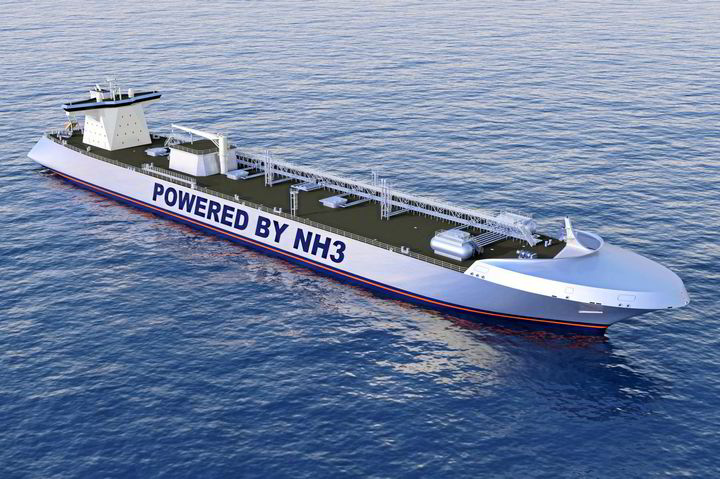Switching global shipping to hydrogen-derived green ammonia would require $2.25trn of infrastructure investment: study

Infrastructure investment of $2.25trn will be required around the world if 90% of the global shipping fleet were to use green ammonia as its only fuel in 2050, according to a new Oxford University study.
This includes investment in facilities producing hydrogen and ammonia (including wind and solar farms supplying the renewable electricity), pipelines and port storage facilities, but not the cost of converting vessels to run on ammonia.
Demand for the chemical from maritime fuel alone would be up to four times higher than the current annual production of grey ammonia (made from hydrogen derived from unabated natural gas or coal) of about 180 million tonnes.
Half of the $2trn of infrastructure investments would be required in low- and middle-income countries, adds the paper, entitled Optimal fuel supply of green ammonia to decarbonise global shipping, published in the scientific journal Environmental Research: Infrastructure and Sustainability.
Researchers examined the potential maximum demand and costs for green ammonia in shipping and the locations likely to produce it cheaply — largely due to high amounts of sunshine for solar power and available land — and be able to ship it to the locations where it will be most needed.
“The greatest investment need, and opportunity, is in Northern and Western Australia, which is projected to become the main supplier for Asian markets,” the authors wrote.
Article continues below the advert
“Large production clusters are also predicted in Chile (to meet demand in South America), California (to meet demand in the western US), North-West Africa (to meet European demand), and southern Arabian Peninsula (to meet local demand and in parts of south Asia).”
Europe would consume about 9% of the global ammonia demand, but produce less than 0.05% of the global supply itself.
The study calculates the weighted average levelised cost of green ammonia — including production and electricity costs, pipeline construction, port storage, and fuel transportation costs — at $237 per tonne. Due to its lower energy density by volume compared to the heavy fuel oil (HFO) used today, this would be equivalent to an HFO price of $490-540/tonne, which it says is “similar as the cost of very low sulphur fuel oil at present”.
It is worth noting that the study does not even mention green methanol, another hydrogen derivative that is widely expected to be a major clean shipping fuel of the future.
A version of this article previously appeared in Hydrogen Insight’s sister publication TradeWinds.





